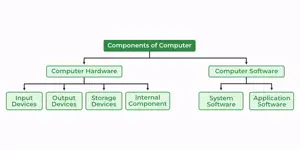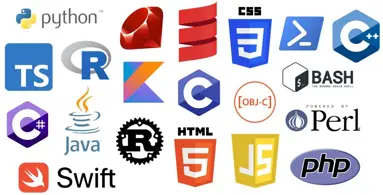554+ The opportunity to introduce the job of the Category IT
Hiring High-Paying IT Roles | Aniday
1. What is IT (Information Technology)?
The first concepts of the IT industry began emerging in Vietnam around 1993. At that time, the industry was understood as utilizing a collection of modern technology tools and devices as well as the most scientific approaches to fully deploy existing resources to achieve maximum efficiency. IT mainly uses technology devices such as computers or computer software.
IT is the use of technology devices, storage, networks, and other physical devices, infrastructure, and processes to create, process, store, secure, and exchange all forms of digital data. Typically, IT is used in the context of business operations as opposed to personal or entertainment technology. Commercial use of IT includes both computer and telephone technologies.
Fields in the IT industry include programming, information systems, computer networks, cyber security, data science, artificial intelligence, etc.
The term IT first appeared in an article published in the Harvard Business Review to distinguish between machines created for specifically designed functions and versatile computers that can be programmed for various tasks. When the IT industry developed in the mid-20th century, computing capabilities advanced while equipment costs and energy consumption decreased, a cycle that continues today as new technologies emerge.
The IT industry is among the top 3 industries with the most recruitment in recent years. Many companies are expected to continue investing in recruiting IT professionals to attract quality human resources in this field. Therefore, it is predicted that there will be plenty of open and exciting career possibilities in the IT sector shortly.

2. What are the differences between IT Software and Hardware?
IT includes several layers of physical devices (hardware), virtualization and management or automation tools, operating systems, and applications (software) used to perform essential functions. User devices, peripheral devices, and software, such as laptops, smartphones or even recording devices, can be included in the IT domain. IT can also reference architectures, methodologies, and governance policies for managing and storing data.
Business applications include database systems like SQL Server, transaction systems like real-time order entry, email servers like Exchange, web servers like Apache, customer relationship management, and enterprise resource planning systems. These applications implement programmed instructions to manipulate, integrate, distribute, or impact data for business purposes.
Servers run the business applications. Servers interact with client user machines and other servers across one or more business networks. Storage is any technology containing information in the form of data. Information can be in any form including file data, multimedia, telephone data and web data, data from sensors, or future formats. Storage includes random access memory (RAM) as well as non-volatile tape, hard disk drives, and solid-state flash storage.
IT architectures have evolved to include virtualization and cloud computing, where physical resources are abstracted and pooled into different configurations to meet application demands. Clouds can be distributed across locations and shared with other IT users contained within a company's data center or some combination of both deployments.
3. How to become an IT engineer?
Get a credible degree in computer science or a related field - Most software engineer positions require a bachelor's degree. A computer science major will provide the most useful foundation for designing and perfecting software. Candidates are best prepared for interviews with a traditional computer science degree because employers typically center interview questions around data structures and algorithms. Nonetheless, applicants might have to put in considerably extra time outside of the classroom to comprehend how the theoretical ideas they are taught relate to real-world software development.
Begin programming - Candidates can set themselves up for success even in their early university years by teaching themselves programming. Candidates will need to know at least a few languages and have a deeper understanding of how they function because software technology is not only about coding. There is no widespread assertion of which language is most useful, but these are common choices:
- Python
- Ruby
- JavaScript
- C#
- Java
- C++
Research data structures and algorithms - An "algorithm" is simply a formula or process for solving a problem. Typical instances include determining the shortest paths between two points, looking for a particular piece of information within a sizable collection of data, and sorting to arrange the data in a particular manner. A "data structure" is a methodical approach to data organization that facilitates the resolution of specific issues. Common examples are hash tables that store data keyed by some "key" instead of a position in a list, and simple arrays that just contain data items sequentially in order. Once you've landed a job as a software engineer, put all of your effort into honing and maintaining your talents.
4. IT fields and appropriate programming languages for each field
There are a variety of career opportunities in the IT industry, each field will require candidates to be proficient in certain programming languages specific to the area they pursue.
Mobile field: occupies the largest market share, in particular, Android is written in Java, while iOS applications are formed in Objective-C. In addition, Java is widely used in mobile software development and other fields.
Website field: has many C#.NET and Java programmer positions recruited to meet the increasingly demanding needs of users. However, PHP remains the leading language and is applied in most websites.
Embedded field: requires high expertise, C/C++ and Java are commonly used programming languages in this field.
Data analysis: While Data analysts play the roles of collecting, summarizing, and illustrating data into meaningful insights for business improvement and development. Professionals in this field also need knowledge of programming languages like R, and Java to support data analysis.
Robotic and IoT fields: require extreme specialization in programming, so programmers in these fields need to master languages that can be applied in many fields such as C/C++, Java, Python, Swift, or PHP.
AI field: is considered the key to future technology. The AI programming field is more difficult than other fields, and appropriate languages for this field include Python, Java, Lisp, C++.

5. Skills needed for an IT
Software development - requires the ability to analyze user needs, then design, test and develop software to meet those needs. College students can gain experience in this field by taking relevant courses and completing an internship at a software company. Software development skills can also be honed by working with actual systems and among other highly skilled software engineers.
Object-Oriented Design (OOD) - David Garlan, professor of computer science at Carnegie Mellon University and co-author of Software Architecture: Perspectives on an Emerging Discipline, notes that over the past 30 years, there has been a strong push toward object-oriented programming. This approach involves planning a system of interacting objects to solve software problems. Object-oriented design includes four main principles:
- Abstraction
- Encapsulation
- Inheritance
- Polymorphism
If these still seem unfamiliar to you, don’t worry - online courses through platforms like Coursera and Udemy can equip you with basic knowledge of these principles.
Software testing and debugging - Although many new AI (artificial intelligence) programs are focusing on automating software testing and debugging, job seekers need to acquire these skills. Indeed, testing and debugging take up a large portion of the time and costs for a software project. Software testing and debugging require IT engineers to think analytically about how systems are integrated. There are online software testing and debugging classes, but these skills are more like crafts that require honing through experience.
Problem solving and logical thinking - Software problems can arise from the smallest bugs and programmers spend most of their time debugging rather than writing code. Therefore, being able to not only accurately identify software issues but also use deductive reasoning to solve those problems is extremely important for many technical software jobs.
Teamwork - Communication skills are critical for software engineers as they often work in teams. Therefore, respecting others, the ability to listen, the ability to accept criticism, and the ability to empathize with others are all important skills.


